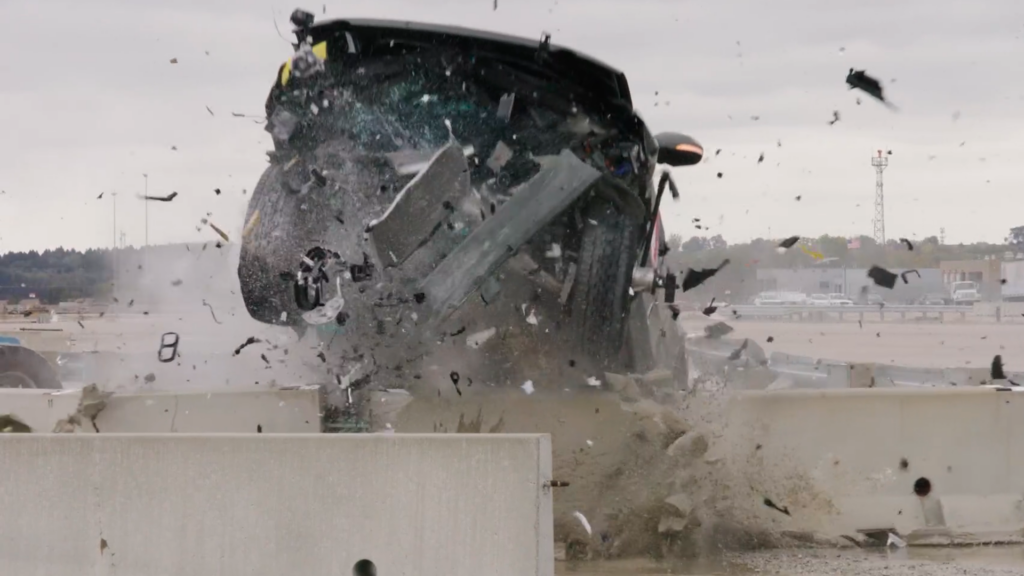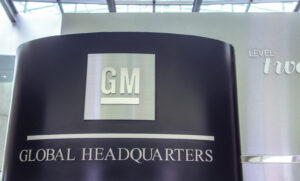Watch What Happens When a 7,000-Pound Rivian Collides with a Concrete Barrier

Brands like Rivian and Tesla and some of the most popular electric vehicle brands in the U.S. With more electric vehicles being used on the roads than ever, they also bring with them their own unique set of obstacles and safety issues. Their large batteries make the vehicles considerably much heavier than gas-powered cars and trucks, and an EV fire can take hours to put out due to the large amounts of energy being stored inside its battery cells.
RELATED: 100 Firefighters Battled an EV Inferno at GM’s Detroit Plant for 7 Hours
Every year, thousands of on-road fatalities are the result of over 100,000 run-off-road crashes involving traffic infrastructure like roadside barriers and guard rails.
“There is some urgency to address this issue,” says Cody Stolle, assistant director of the Midwest Roadside Safety Facility. “As the percentage of EVs on the road increases, the proportion of run-off-road crashes involving EVs will increase, as well.”
To gather information on the safety and military defense concerns stemming from the rapid increase in electric vehicles on American roads, the U.S. Army Engineer Research and Development Center (ERDC) sponsored a research project at the University of Nebraska-Lincoln’s Midwest Roadside Safety Facility using a 2022 Rivian R1T pickup truck.
Rivian R1T vs Steel and Concrete Barriers
On October 12th, 2023, the research team set up the 7,000-lb Rivian R1T to travel at 60 mph in a crash test against a metal guardrail and concrete barriers. As seen in the video below, the Rivian truck tore right through the metal guardrail with little to no resistance before crashing into the concrete blocks. Upon colliding with the barrier, the front end of the truck smashed into hundreds of pieces, sending shards of metal, glass, and plastic everywhere, as well as liquid coolant pouring out onto the ground.
In a separate test conducted in September 2023, the team used a 2018 Tesla Model 3 sedan similarly. But in the Tesla’s case, it had lifted the guardrail and passed underneath it, eventually stopping behind the barrier. Additional crash tests are being planned by the team. Once they are complete, transportation officials, defense experts, and Midwest Roadside Safety Facility researchers will share their findings and determine how to best adapt to the growing EV fleet on America’s roads.
“The U.S. Army Corps of Engineers mission is to deliver vital engineering solutions, in collaboration with our partners, to secure our nation, energize our economy and reduce disaster risk,” says Genevieve Pezzola, a research civil engineer at the U.S. Army Engineer Research and Development Center.
“It is critical to conduct these EV baseline comparison tests to understand any potential risks to our nation,” she added. “This work is the first necessary step toward ensuring that our nation’s protection measures, such as roadside barrier systems and barriers to protect against hostile vehicles, are adapting to accommodate for the changing composition of the vehicle fleet.”
What Are These Barriers Made Of?
The guardrail system being used in the experiments was made of 12-gauge corrugated steel attached to steel posts positioned 6-inches deep in the ground, anchored with 8-to-12-inch thick blockouts. The height of the rail is 31 inches tall.









